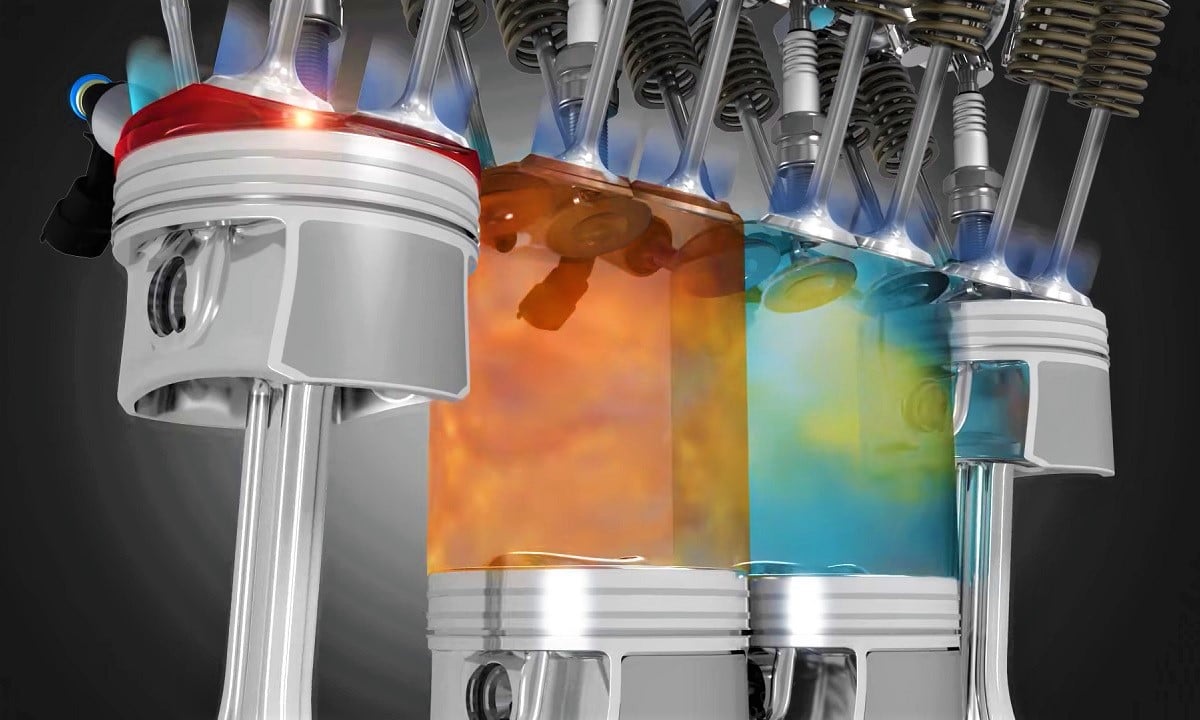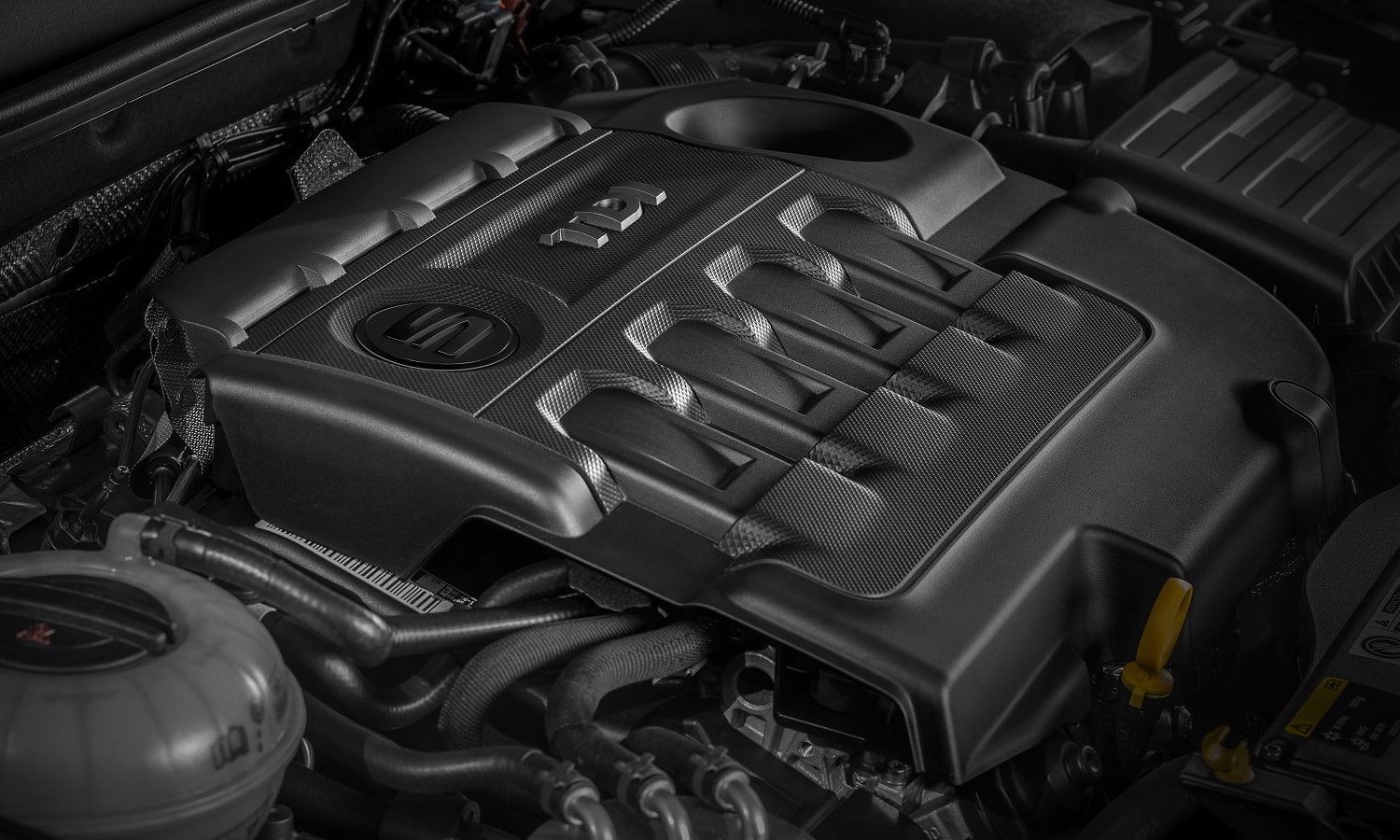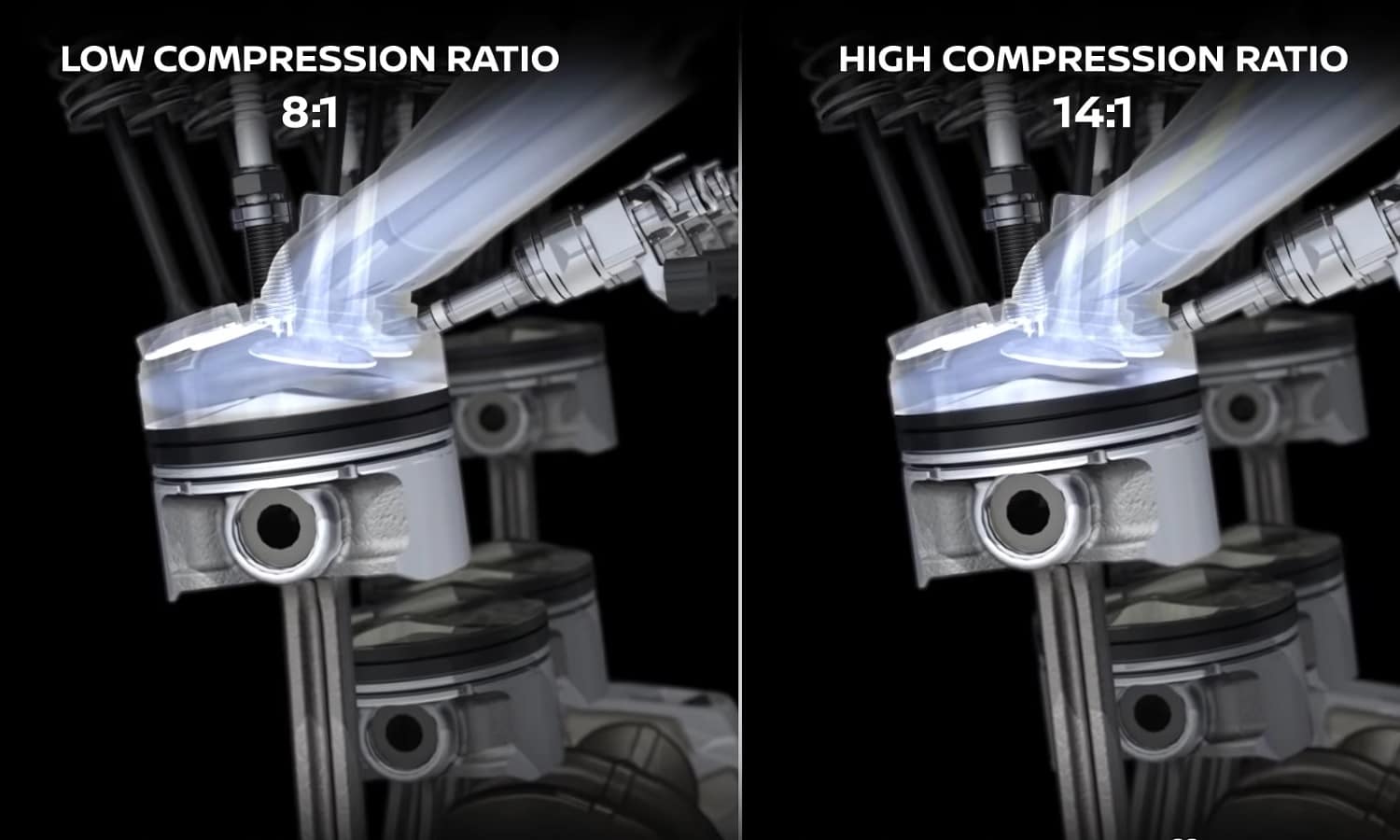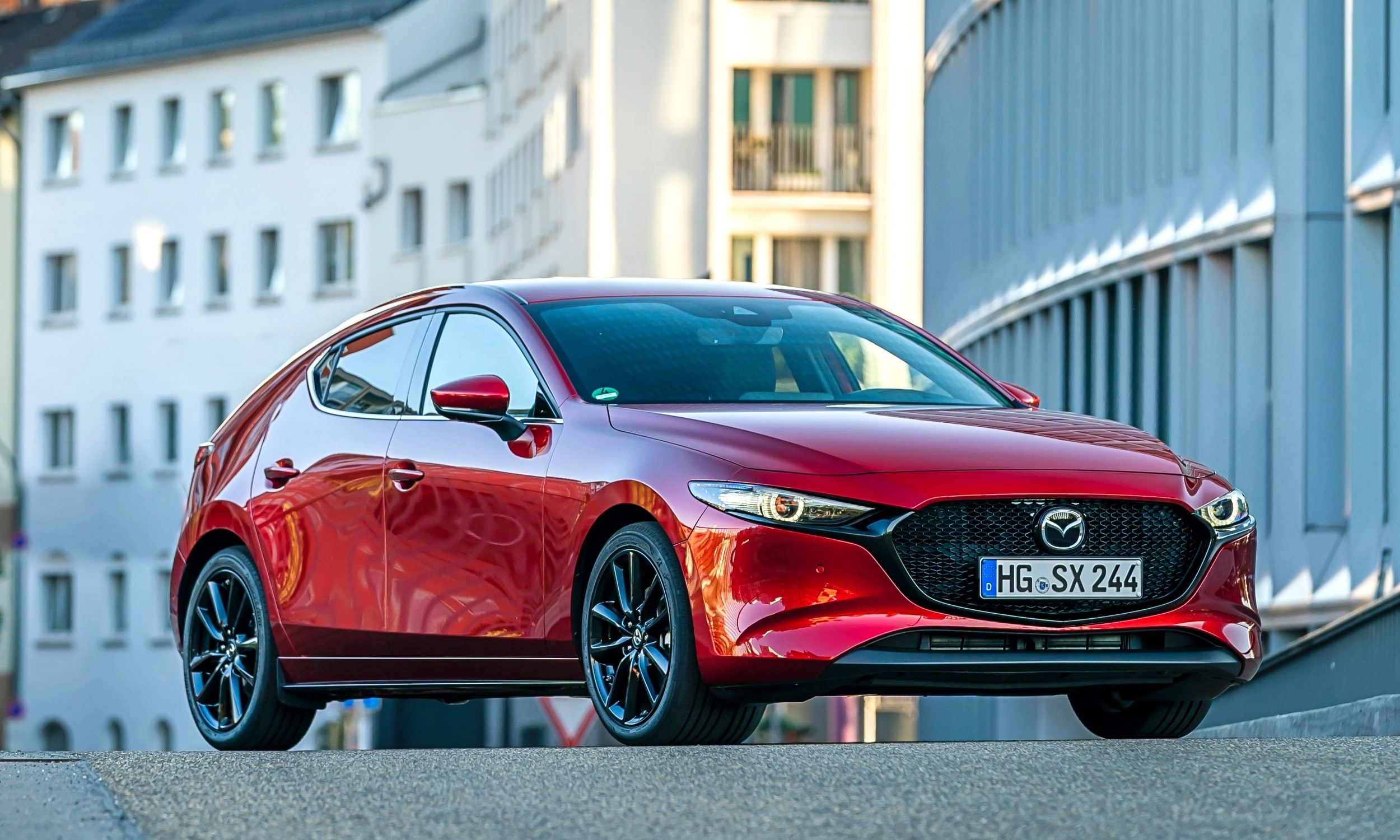
One of the factors that most affect the operation of an engine is undoubtedly the compression ratio. This is a fact that largely determines its thermal performance. That is, the way in which it takes advantage of the energy from combustion to transform it into movement.
Bluntly, it's about the relationship that exists between the volume of the air/fuel mixture when compressed and its volume once it's over detonated. Although to be exact, in diesel engines what is compressed is only air, because the diesel is injected afterwards.
compression ratio expressed as two numbers that allow us to measure a proportion. For example: 10 to 1, 11 to 1, 12 to 1, 14 to 1 Or whatever value it is, which only means that the mixture expands 10, 11, 12 or 14 times once it has burned. The more difference there is between the two compared volumes, the more thermal performance it will have the motor, because it will take advantage of its expansion to generate movement.

High or low compression ratio
Once this is known, the most natural question is: why don't all engines have a very high compression ratio? Why are there many who settle for a low ratio of 10 to 1, since they would be much more efficient if it were higher?
To understand this, you have to know two very simple facts, but they are decisive:
- self detonation: There is a maximum pressure to which the air-fuel mixture can be subjected without detonating on its own. If this limit is exceeded before the piston reaches the top, the explosion occurs prematurely and the engine can be seriously damaged.
- compression pressure: is the pressure that the mixture reaches once the piston is at the highest part of its travel. If we inject little mixture in that volume, the pressure will be low and if we inject a lot it will be higher. So you will understand that there is a limit of fuel that can be put in that space without causing the aforementioned phenomenon of self-detonation.
If you have already assimilated these concepts, you will understand that compression ratio cannot be high on any model. There are engines that are capable of putting a lot of fuel into their combustion chambers. In them, everything would be fine as long as the accelerator was not pressed too much, because little mixture would be injected. The problem would come when you press the accelerator harder, at which point the mixture would be too abundant and it would self-detonate prematurely due to excess compression pressure.
These two concepts can be confused, but they refer to totally different issues. On the one hand, the compression ratio it's just one comparison between volumes: when the piston is at Bottom Dead Center (BDC) and when it is at Top Dead Center (TDC). That is why it is expressed in the form of a ratio “X to 1”. So there is no point in trying to express the compression ratio in bars or any other measure of pressure, because it doesn't measure a magnitude.
On the other hand, the compression pressure indicates the pressure reached by the mixture when the piston is at Top Dead Center (TDC). In this case, it is expressed with a value followed by a pressure measurement unit. For example: in bars or in kg/cm2.

The solution to this is clearly seen in turbo engines, In the the compression ratio is deliberately lowered. Since they put compressed air into the cylinders so they can burn more fuel in that space, they can't have a high compression ratio because it would self-detonate prematurely.
We can look at the compression ratio of some models to see that depends a lot on the type of engine:
- The Seat León 2020 1.5 EcoTSI 150 hp: it has a turbocharged gasoline engine and has a compression ratio of 10,5 to 1.
- The 86 Toyota GT2016: It has a naturally aspirated engine and has a compression ratio of 12,5 to 1.
- The Mazda 3 Skyactiv-G 2.0 with 122 hp: it also has a naturally aspirated engine and its compression ratio is 13 to 1.

Compression ratio and octane
The octane number of the fuel also greatly affects the compression ratio with which an engine can be set. This property refers to the pressure you can apply to a fuel before it self-detonates. In gasoline they are the numbers you see at all gas stations: 95 or 98.
the older is this number, more pressure bears unexploded fuel. So engines using 98 gasoline can be optimized with a higher compression ratio without problems. For example, the Honda Type R uses gasoline 98 for the characteristics of its 2.0 hp 320 turbocharged engine.
In the 30s, a table was established for classify fuels by pressure that they held before detonating. For this, two fuels with completely opposite behaviors were chosen. The n-heptane, which was the known substance that withstood the least pressure, and isooctane, which was the one that most withstood it according to the data of the time.
The first was given a value of 0 and the second 100 as reference values. Thus, numbers were assigned to other fuels depending on the pressure they endured. Hence, the current gasolines have the number 95 or 98 and not others. Although gasolines with 97 and 100 octane are already beginning to be marketed.
Compression ratio in diesel and gasoline engines
One of the reasons the engine diesel is more efficient than a gasoline is that its compression ratio is higher. The normal thing is that in turbodiesels it is between 15 to 1 and 17 to 1, although engines of up to 24 to 1 can also be found.

This relationship can be achieved thanks to the fact that diesel engines they work very differently than gasoline. They do not ignite the fuel-air mixture by a spark from a spark plug, but instead compress air to then inject diesel where it will detonate by pressure without any system that induces it.
Logically, they are calibrated to do this at the right time, which is when the piston is all the way up and it's time to go down. That is, when the compression phase has ended and the expansion phase begins within the cycle of a four-stroke engine. Not like when the mixture self-detonates prematurely with consequent damage to the engine.
Cetane not octane
In the case of diesel the data that interests It's not the octane but the cetane. What is the value that determines the time it takes for the fuel to detonate, since it is put under pressure. In the case of a diesel engine, it is the time it takes to detonate from the moment it is injected into the air that has been previously compressed.
The diesel sold today has a cetane rating of y entre 51 55. The higher this number, the sooner it will detonate and the less delay there will be in the combustion chamber to obtain energy. Something that some petrochemical companies use as a commercial claim so that customers opt for their gas stations.

Minimum compression of a diesel engine
There is a concept that is also interesting to know about diesel engines and that is that require minimal compression. If they do not reach a certain level, they will not be able to turn on the diesel and will not work. In other words, if too much pressure is lost, for example by the piston rings or by Válvulas, the engine won't even start.
This does not happen in a gasoline engine, because what ignites the mixture of air and gasoline is the spark of the plugs. This does not mean that it will not lose pressure where it leaks, once the detonation has occurred. That way it will work, but losing efficiency and performance by not being able to make good use of energy.
The exception to the norm
There is one exception to this difference between gasoline and diesel, which has been developed by Mazda: The Skyactiv-X 2.0 180 hp. This gasoline engine has an operation that is halfway between that of a diesel and a gasoline. detonation of the fuel is made partly by compression and by spark plugs. That's why it has a compression ratio of 16,3 to 1 which is comparable to that of many diesels. For example: the 320 BMW 2019d is 16,5 to 1, the 4 Audi A2020 40 TDI is 15,5 to 1, and the 220 Mercedes C-Class 2018d is as well.
Hence, the brand announces consumption close to that of a diesel with a similar level of performance (180 hp), although this engine is an atmospheric gasoline.
Variable compression ratio

Here we arrive at a solution that allows modify the compression ratio as needed. A capacity that allows to considerably improve efficiency and performance. An engine equipped with a variable compression system allows you to achieve the perfect ratio, whether it is injected with a large amount of mixture or little.
For example, if you go to “gas tip” to maintain speed, amount of mix What goes into the combustion chamber is small. moment in which the compression ratio can be Most without self-detonation. Instead, if we ask for the maximum acceleration to the same engine, mixture It will be a lot more abundant and will take up more volume, so the compression ratio will adapt to be less and thus prevent it from exploding prematurely.
In practice this is noticeable in that the engine with variable compression achieves more efficiency, because it adjusts the compression ratio to the maximum possible in each circumstance. At the same time, it also makes it possible to reach a performance very high because you can set it all the way down so you can get a lot of mix into the chamber.
Un good example of this type of technology is the engine Infiniti VC-T, luxury sub-brand Nissan. It works thanks to the fact that they add an exocentric shaft and intermediate connecting rods that connect to the crankshaft. An actuator moves this set of parts to move the stroke of the pistons up or down to change the compression ratio. In the following video you can see how he does it:
Other interesting example is the new INNEngine motor which is in the development phase. That uses a much simpler system to achieve a similar effect, since instead of the typical crankshaft, has a set of cam plates or sine plates.

Compression Ratio Formula
The values taken into account to calculate the compression ratio (RC) are the cylinder bore (d), the Piston race (s), which is the distance it travels from PMS to PMI, and the minimum combustion chamber volume (Vc). The formula is as follows:

However, this compression ratio calculation does not include some details which should be added if necessary. Depending on the engine configuration, there may be certain volumes that are not included in the formula:
- and piston head is concave, you have to add the volume of that hole, since it is neither added to the piston stroke, nor does it have to be included in the volume of the combustion chamber. If the manufacturer's data is not available, you can choose to measure it directly. Although it requires having the component at hand. It is about filling it with liquid to see how much volume it really has. At minute 4.10 of This Video you can see how it's done. A workshop job that requires certain equipment.
- La head gasket it is also a value to add to the minimum volume of the combustion chamber, if it is not already included in it. In this case it is very easy to obtain it because it is measure your height and use again formula for the volume of a cylinder.
Gas station image – Mikel Ortega

I need to boost my motorcycle engine from a Chinese brand QMC 200c.c. enduro type I need your advice and also what types of motorcycle parts should I introduce or what should I do I write from ECUADOR -GUAYAQUIL
I would like to know what power is generated by the explosion of a piston of a normal car, it can be measured in Kg. Force example 150 or 200 kg. force.every time it explodes.
I wish someone would tell me, I'm curious.